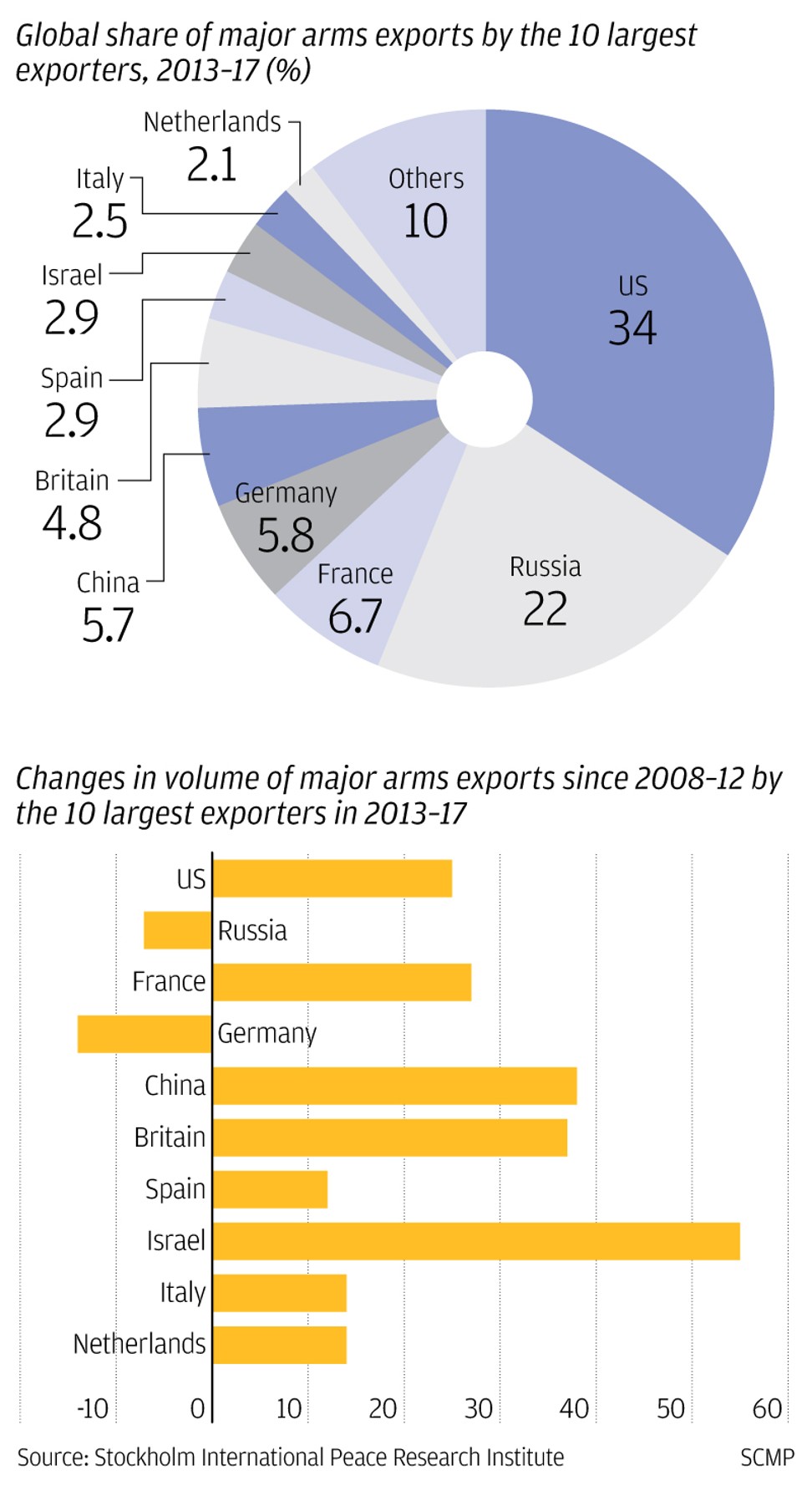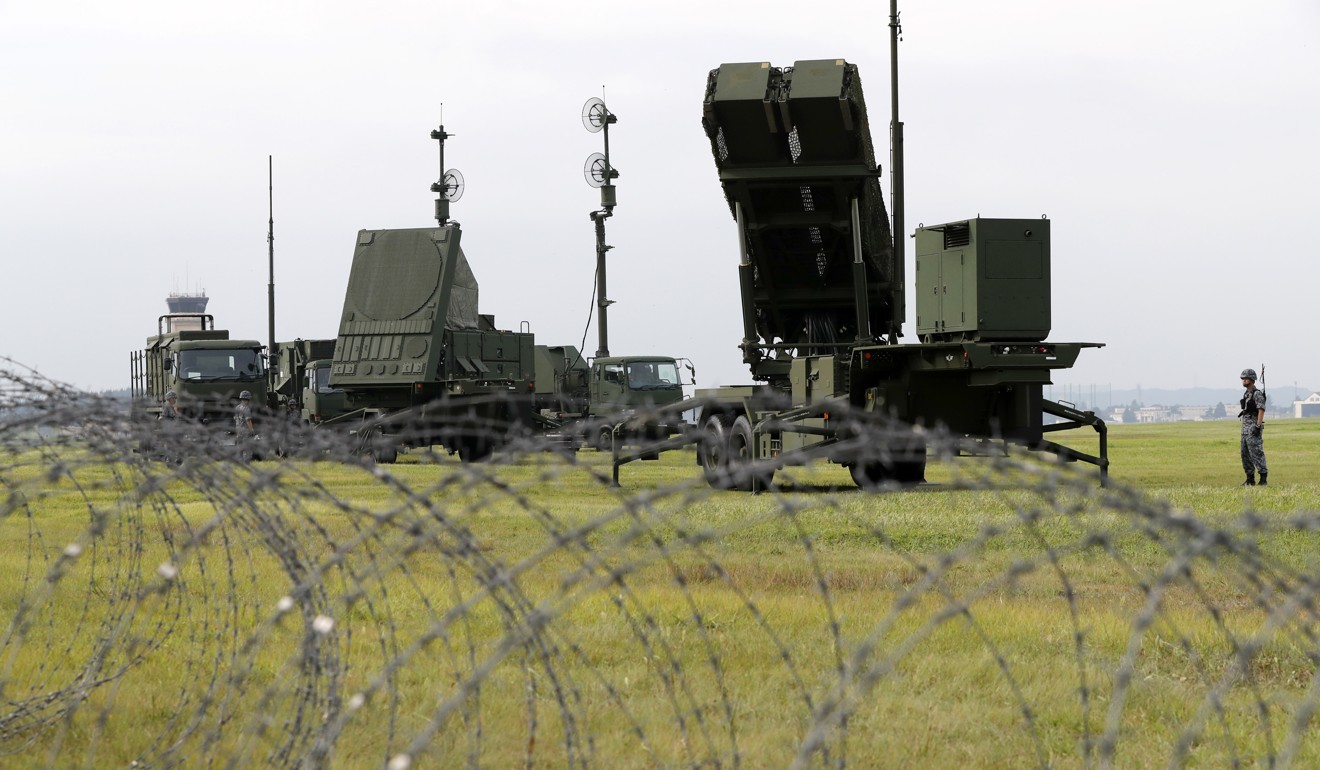
China’s arms sales rise as it vies with US for influence on the world stage
Research group highlights Beijing’s growing share of global arms trade as it tries to strengthen ties with key allies
The rivalry between America and China has seen both sides step up international arms sales and transfers as they seek to strengthen military ties with key allies, according to a report published on Monday.
The study by the Stockholm International Peace Research Institute (SIPRI), which examined the volume of international transfers of major weapons between 2008 and 2017, showed China’s arms exports represented 5.7 per cent of the world’s share of arms exports between 2013-17 – up by more than a third from the 4.6 per cent recorded between 2008-12.
The report was published a week after China unveiled an 8.1 per cent increase in military spending over a three-year period, although China’s state media defended the rise as proportionate and low, adding that it would not lead to an arms race with the United States.
The administration of US President Donald Trump has dubbed China as a “rival”, and the latest SIPRI report shows how the US has used arms transfers as a foreign policy tool to offset Beijing’s growing influence.

For example, US arms deliveries to India grew by 557 per cent between 2008 and 2017, the year China and India became embroiled in a protracted border dispute over the Doklam region in the Himalayas.
“This development is part of the growing strategic partnership between the two countries under which the USA has begun to supply India with advanced military equipment,” the report said.
The US has also started to increase its security cooperation with Vietnam, which is embroiled in a dispute with Beijing over the South China Sea.
In 2017 it delivered one patrol ship, the USS Morgenthau, to Vietnam – the first major US arms transfer to that country.
Tensions between China and Japan in the East China Sea also saw Japan moving closer to the US, the report said.

It said Tokyo turned to the US for several types of advanced weapons between 2013 and 2017, including the first batches of a total of 42 combat aircraft.
Japan also ordered advanced air and missile defence systems from the US in the same period.
But in cases where US relations with other countries had deteriorated the result was a fall in arms transfers.
For example, the report said that Venezuela, which once relied on the US as its main arms supplier,
had rebuilt its armed forces with weapons from China and Russia after ties with Washington soured following the Hugo Chavez’s election as president in 1999.
As China became increasingly capable of producing its own advanced weapons, its arms exports increased by 38 per cent and its arms imports decreased by 19 per cent in 2013-2017 compared with 2008-2012.
The report showed China delivered major arms to 48 countries in the past five years, with Pakistan topping the list, followed by Bangladesh and Algeria.
“China was the largest arms supplier to Pakistan in 2008–12 and 2013–17. Although the volume of China’s arms exports to Pakistan remained roughly the same in both periods, its share of Pakistan’s arms imports rose from 45 per cent in 2008–12 to 70 per cent in 2013–17 due to the overall decrease in Pakistan’s arms imports between those periods,” the report stated.
The report also said China’s arms exports to Africa rose by 55 per cent over the period.
Military expert Collin Koh, from the S Rajaratnam School of International Studies at Nanyang Technological University in Singapore, said higher value military items like warships and fighter jets were the major reason for the rise in China’s arms exports.
“This is most notable in naval sales. For example, submarines to Pakistan and Thailand, and corvettes to Bangladesh and Algeria. Even with land-based systems, China has also made inroads in higher value sales, such as its long-range rocket artillery,” he said.

